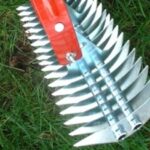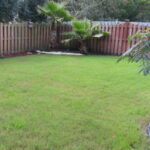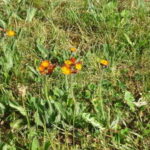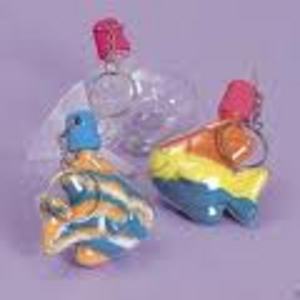Dethatching your lawn in the fall is a good idea if you want to keep your lawn looking healthy and fresh. When you dethatch your lawn all you are doing is removing the layer of thatch that has accumulated in your lawn. The thatch is composed of decomposing grass, dead roots, and other debris that have been scattered in your yard. Dethatching your lawn is important for water and vital nutrients to be able to enter the soil and lawn roots. If you are going to dethatch your lawn this fall then here are ten tips you should keep in mind.
1. You should stop using fertilizing chemicals for at least seven weeks prior to dethatching your lawn in the fall. This means that if you dethatch your lawn in November, you need to stop fertilizing by about September to give the lawn enough time to prepare.
2. You do not want to dethatch your lawn right after a hard rain because of the damage the dethatching equipment can do to soggy soil. You should dethatch after a small amount of rain has fallen or after you have watered your lawn. When you walk on the grass you should notice it is moist but not soggy to where you are splashing up puddles as you walk.
3. Before you dethatch your lawn in the fall you also want to make sure you have recently mowed your lawn. Make sure when you mow your lawn you are using the lowest height for your grass so that the dethatching process can work properly. When you have finished mowing the lawn you also need to rake up the grass clippings so it does not interfere with the dethatching.
4. When you dethatch your lawn in the fall you also want to make sure that you have done this before the first big frost of the season. It is important you dethatch your lawn before a frost because the ground needs to be soft and moist during this procedure. Do not wait until the ground is hard from the cold temperature to dethatch because it will not work.
5. If you are using an electric or power dethatcher then you need to do some research around your yard first. Make sure that you know where all of the cables and pipes are buried underneath the soil so you do not accidentally hit them. There are various pipes, lines and cords that run in the ground and if you hit one of them you might create a very bad situation. You might want to place a marker in your lawn where the pipes and lines are located so you know not to dethatch as deep in that area or you can avoid it all together.
6. You might also consider manually dethatching your lawn a little bit using a cavex rake. You can get a cavex rake at your local home improvement store for about 20 dollars and it can help get some of the thatch up. You want to keep the area small with the cavex rake or else you will be doing too much manual labor. The cavex rake is really nice because it has really sharp blades that work much better than an ordinary rake. All you have to do is move the cavex rake across your lawn and the thatch will come up to the top of the soil.
7. It might take a while to get used to the machines you will use during your fall dethatching so take your time. You will probably have to go over certain areas of your lawn a few times to get the hang at how the dethatching tool works. When you are using a power dethatcher it might be better to set it higher rather than lower. Setting the dethatcher on high will not damage your lawn and it will give you a feel for how the dethatching process works.
8. Dethatching your lawn in the fall will also create a lot of debris especially leaves and weeds so have an easy way to dispose of it. You do not want to leave the debris in your lawn that was collected during the dethatching process since it would defeat the purpose. Make sure you have a rake and a bag handy so that you can easily clean up the debris and other items that showed up during the dethatching process.
9. When you are dethatching your lawn in the fall it is also important to know what kind of grass you have. Certain grass requires dethatching at a specific depth and space so you have to be aware of which grass you are working with. If you are not sure about what type of grass you have then you can call a lawn care professional that will be able to help you. It is important to know the type of grass you are dethatching so that you can do it properly without hurting your lawn.
10. Once you have dethatched your lawn in the fall, you will need to fertilize your lawn and water it sufficiently. The thatch probably has been keeping vital nutrients from reaching the soil and roots so it is important to use a fertilizer to build it back up. The fertilizer should be watered into the soil so that it can penetrate deeper which will keep birds from eating it. Once you have fertilized and watered your lawn, you have successfully finished dethatching your lawn during the fall season. With these tips you will be able to provide your lawn with essential nutrients to keep it looking healthy and strong in the spring.







